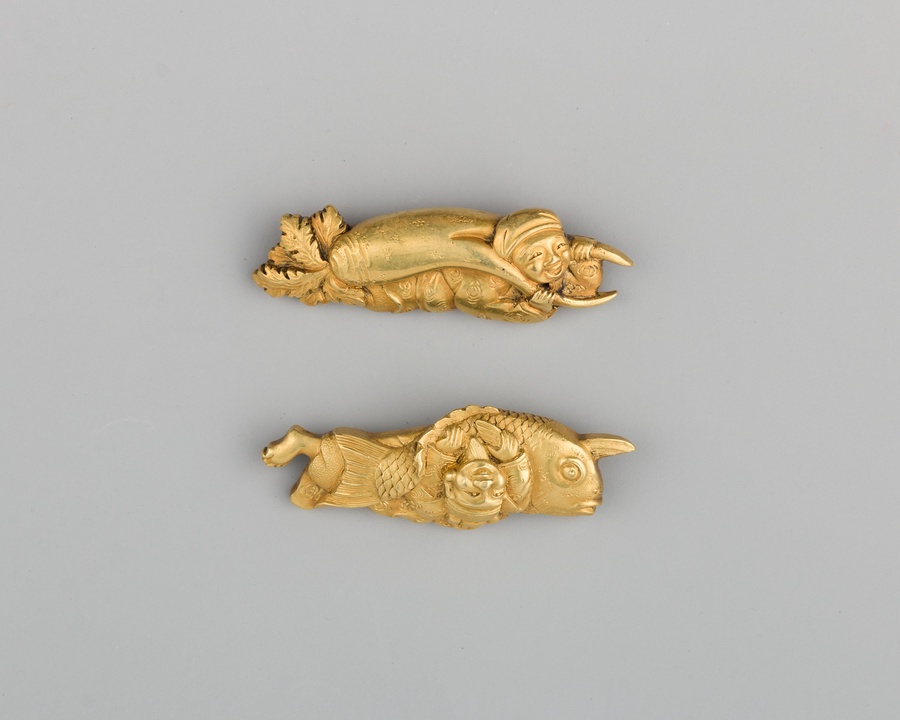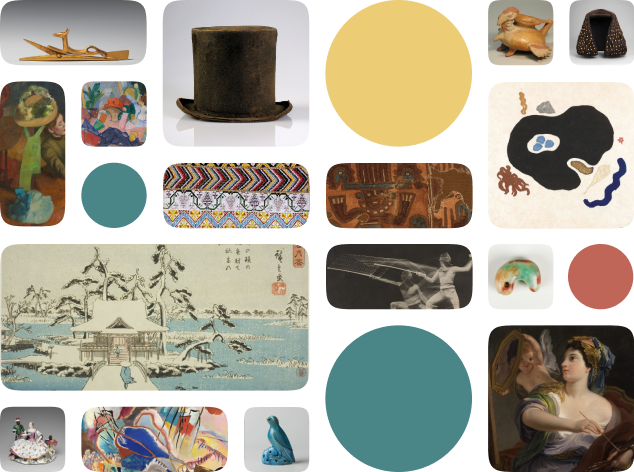About the work
These gold menuki, from the Edo period, would have been fastened to either side of a sword hilt. A samurai or other elite would have likely owned a sword affixed with these menuki. In the top menuki, a man rides a two-legged radish. Because of their form, daikon radishes are frequently associated with sexuality in Japanese Buddhist iconography. They are also associated with the god Daikoku, one of the Seven Propitious Gods. He represents fertility, agriculture, and good fortune, and is often pictured with a forked daikon radish and mice or rats. A similar menuki (not pictured here) depicts the radish and rat together in a veiled sexual reference https://art.thewalters.org/detail/16011/menuki-with-daikon-radish-and-rat/. In the bottom menuki, a male figure rides a fish. This is likely an illustration of the myth of Qin Gao, an immortal from the Daoist tradition. Qin Gao lived for over 200 years. He enjoyed painting fish, so a carp offered him a ride through the water. Qin Gao was so enchanted by the experience that he forbade his followers from eating fish.
Metropolitan Museum of Art Object Description
Pair of sword-grip ornaments (Menuki)
Work details
"--" = no data available
All Works in Curationist’s archives can be reproduced and used freely. How to attribute this Work:
.

